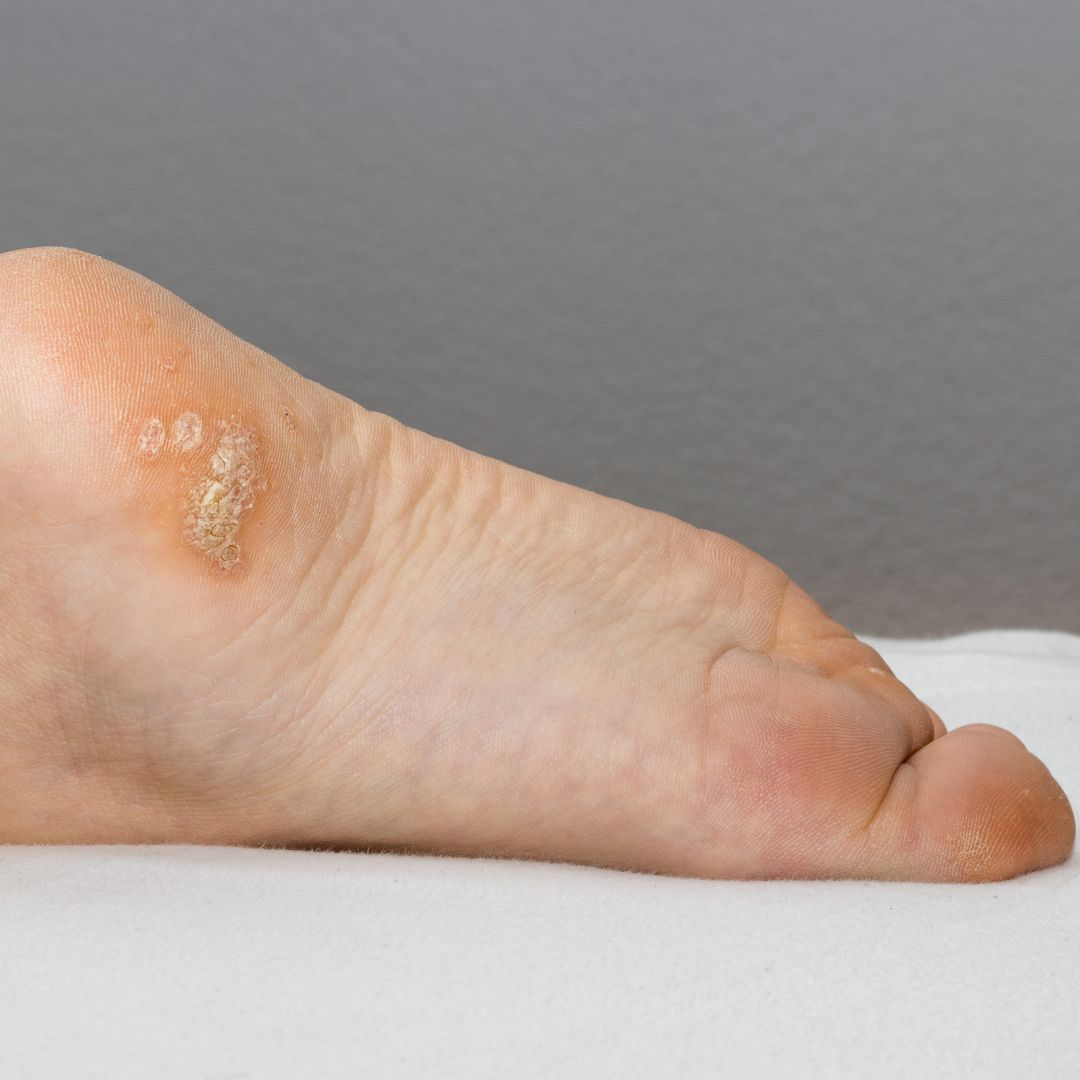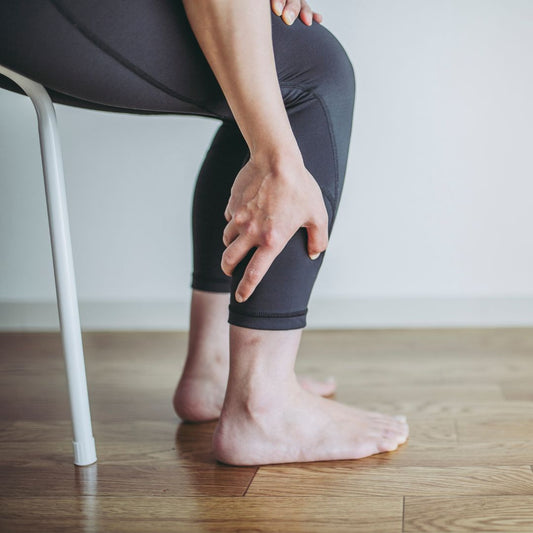By Dr. Peter Klapper Ph.D.
Have you encountered what looked like a grainy growth on the bottom of your foot? Maybe it hurts to walk? If so, the warts on your feet may be plantar warts. Plantar warts are a common, yet often misunderstood, skin condition and typically appear on the soles of the feet, heels, or toes. While they are usually harmless, they can be painful and unsightly, making it important to understand how to prevent and treat them.
In this blog post, we will help you navigate those sneaky foot invaders and find the best treatment options to get you back on your feet.
What Are Plantar Warts?
First off, you may be wondering, what exactly are plantar warts? Plantar warts are noncancerous skin growths caused by the human papillomavirus (HPV). They typically develop on the soles of the feet, particularly in areas where weight and pressure are applied, such as the heels or balls of the feet.
Plantar warts often appear as small, rough, and grainy lesions with a hardened, thickened outer layer of skin and may also feature tiny black dots, which are clotted blood vessels. Unfortunately, due to their location, plantar warts can also cause discomfort or pain especially when walking or standing.
Causes and Risk Factors of Plantar Warts
As we discussed above, plantar warts are caused by the human papillomavirus (HPV), which is a contagious virus that enters the body through small cuts, breaks, or weak spots on the bottom of the feet. Once inside the body, HPV infects the outer layer of skin, causing it to grow rapidly and form a wart.
There are several risk factors for developing HPV and plantar warts, many of which include:
- Age: Children and adolescents are more susceptible to plantar warts than adults due to their immune systems being less developed.
- Environment: Walking barefoot in warm, moist environments such as public swimming pools, showers, and locker rooms can increase the risk of coming into contact with HPV.
- Weakened immune system: Individuals with weakened immune systems, such as those with HIV/AIDS or undergoing chemotherapy, are more likely to develop plantar warts.
- Skin-to-skin contact: Direct contact with a person who has plantar warts or with surfaces contaminated with the virus can lead to infection.
- Damaged skin: Cuts, scratches, or other breaks in the skin on the bottom of the feet provide an entry point for HPV, increasing the risk of developing plantar warts.
Symptoms and Complications
If you have a small, rough growth on your foot, you may be wondering if it is a plantar wart. Plantar warts often present with the following signs and symptoms:
Appearance: Plantar warts typically appear as small, grainy lesions on the bottom of the feet. They may be gray, brown, or yellowish in color and have a rough, uneven surface. They may also be dotted with brown or black specks (“wart seeds”) which are dried blood clots. The skin over a plantar wart also may become thickened and hardened, similar to the look of cauliflower.
Pain or tenderness: Plantar warts can cause discomfort or pain, particularly when walking or standing. This pain may feel like a lump under the foot or a small stone in the shoe.
While plantar warts are generally harmless, they can cause complications in some cases. These complications may include spreading to other parts of the body through direct or indirect contact, and if the plantar wart bleeds from scratching or injury, it can become a risk of infection. Recurrence of plantar warts is also possible, especially in environments where the virus is present or in people with compromised immune systems.
Treatment Options
When it comes to plantar wart treatment, several approaches are available, ranging from over-the-counter remedies to medical interventions. Each method has its own set of benefits and risks, and the effectiveness can vary depending on the individual and the size of the wart.
Over-the-counter remedies such as salicylic acid treatments work by gradually removing layers of the wart. They are generally safe but can cause skin irritation, blistering, and chemical burns if used for a long period of time. If you’re looking for a more natural approach that is safe, try our Wart Remover Extra Strength. Our powerful solution removes warts without causing skin damage by blending homeopathic medicine with essential oils.
Home treatments for plantar warts on toes and feet can include duct tape occlusion therapy, which involves covering the wart with duct tape for about six days then removing the dead tissue. While its effectiveness is debated, many people find it to be a simple and inexpensive treatment worth trying. Another trick can be using apple cider vinegar which contains acetic and malic acid that naturally exfoliates your skin. After several weeks of twice a day treatment, you can work to pull out the wart.
Medical interventions for plantar warts, include cryotherapy, laser therapy, and surgical removal. Cryotherapy, freezing the wart, can be painful and may cause blistering. Laser therapy is also effective but can be costly and painful, and surgical plantar wart removal is typically used as a last resort and can potentially leave a scar.
Prevention Strategies
So, how do you prevent plantar warts from taking hold of your feet? First, prevention involves a person practicing good foot hygiene, such as keeping feet clean and dry, avoiding walking barefoot in public areas, and wearing shoes or sandals in communal showers or locker rooms. It's also important to avoid direct contact with warts and to refrain from picking or scratching plantar warts, as this can spread the virus. Lastly, if you do come into contact with a wart, wash your hands with warm water and antibacterial soap.
Moving Forward: Living With Plantar Warts
In the end, plantar warts are common and treatable skin growths. While they can be uncomfortable, they are generally harmless, especially if you act quickly with various treatment options, including over-the-counter remedies and medical interventions, and practice good foot hygiene and protective measures to prevent infection. By taking these proactive steps, you can promote foot health and reduce the risk of developing plantar warts.




